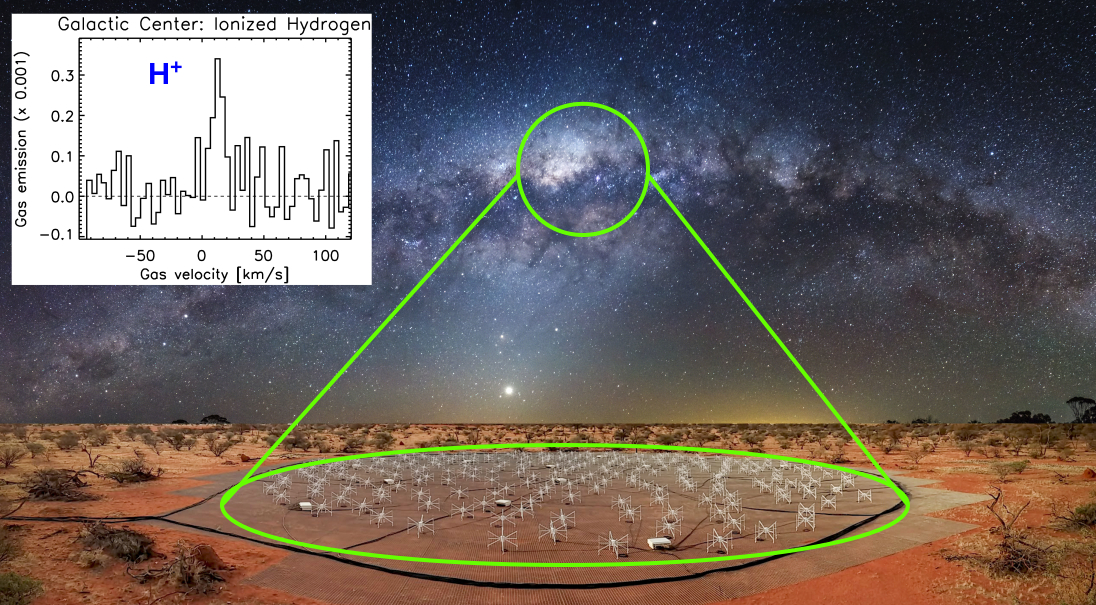Star formation may be halted by cold ionised hydrogen
For the first time ionised hydrogen has been detected at the lowest frequency ever towards the centre of our Galaxy. The findings originate from a cloud that is both very cold (around -230 degrees Celsius) and also ionised, something that has never been detected before. This discovery may help to explain why stars don’t form as quickly as they theoretically could.

A composite image showing our Galaxy, the Milky Way, rising above the Engineering Development Array at the Murchison Radio-astronomy Observatory in Western Australia. The location of the centre of our Galaxy is highlighted alongside the ionized hydrogen (H+) signal detected from this region of sky. The white-blueish light shows the stars making up the Milky Way and the dark patches obscuring this light shows the cold gas that is interspersed between them.
Dr. Raymond Oonk (ASTRON/Leiden Observatory/SURFsara) led this study which is published today in MNRAS. He said: "The possible existence of cold ionised gas had been hinted at in previous work, but this is the first time we clearly see it."
Ionisation is an energetic process that strips electrons away from atoms. The atom will become electrically charged and can then be called an ion. This typically happens in gas that is very hot (10000 degrees Celsius) and where atoms can easily lose their electrons. It was therefore puzzling to discover the ionised hydrogen from very cold gas in this cloud. Normal energy sources, such as photons from massive stars, would not cause this. More exotic energy forms, such as high energy particles created in supernova shockwaves and near black holes, are more likely to be responsible.
Dr. Oonk continues: "This discovery shows that the energy needed to ionise hydrogen atoms can penetrate deep into cold clouds. Such cold clouds are believed to be the fuel from which new stars are born. However, in our Galaxy we know that the stellar birth rate is very low, much lower than naively expected. Perhaps the energy observed here acts as a stabiliser for cold clouds, thereby preventing them from collapsing on to themselves and forming new stars."
The observation was made with the Engineering Development Array (EDA), a prototype station of the Square Kilometre Array (SKA), the worlds’ largest radio telescope. A/Prof. Randall Wayth (Curtin University/ICRAR) says: "This detection was made possible by the wide bandwidth of the EDA and the extremely radio quiet location of the Murchison Radio-astronomy Observatory. The low frequency portion of the Square Kilometre Array will be built at this location in the coming years, so this excellent result gives us a glimpse of what the SKA will be capable of once it's built."
Source: ASTRON
- 235 reads
Human Rights
Ringing FOWPAL’s Peace Bell for the World:Nobel Peace Prize Laureates’ Visions and Actions

Protecting the World’s Cultural Diversity for a Sustainable Future

The Peace Bell Resonates at the 27th Eurasian Economic Summit

Declaration of World Day of the Power of Hope Endorsed by People in 158 Nations

Puppet Show I International Friendship Day 2020

